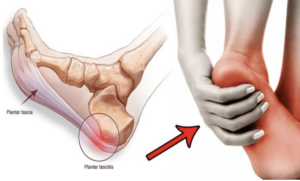
Anatomy
The ankle is a complex joint formed by numerous bones, muscles, tendons, and ligaments. This complexity is what allows the ankle to have such a wide range of motion, but it also means that there are many possible causes of ankle pain. The type of pain you experience will depend on the injury you have sustained, and treatment will be prescribed accordingly.
Cause
Other causes of ankle pain include:
- Arthritis: this condition causes the joints to become inflamed, and it is more common in elders. There are several different types of arthritis, but the most prevalent is osteoarthritis, which results from the natural wear and tear on joints as we get older. Another type of arthritis which can affect the ankle is septic arthritis, which is caused by an infection.
- Gout: this inflammatory disease is caused by a buildup of uric acid inside the joints, due to diet or genetics. The affected joints become red, swollen, and painful in a matter of hours.
- Tendonitis: this condition is usually the result of overuse of the tendons from performing repetitive movements. The most common types of ankle tendonitis are Achilles’ tendonitis, extensor tendonitis, posterior tibial tendonitis, and peroneal tendonitis. It can also occur after sustaining a sprained ankle.
- Tenosynovitis: this term refers to the inflammation of the synovium, which is the fluid-filled sheath that covers tendons. Like tendonitis, it can be caused by acute trauma or by repetitive strain placed on the tendons over a period of time.
- Bursitis: bursae are the fluid-filled sacs that cover joints and act as a cushion to protect them from trauma. These sacs can become inflamed and, in some cases, infected. The most common types of bursitis that cause ankle pain are Achilles’ bursitis and retrocalcaneal bursitis.
- Dislocation: ankle dislocation is very rare, and it usually only occurs in conjunction with an ankle fracture; these injuries are the result of forceful traumatic events.
- Fracture: broken ankles can range in severity from one simple fracture in one bone, to multiple fractures in different bones. The type of fracture will determine how unstable the joint might become after healing.
Since there are so many possible causes of ankle pain, you should always make an appointment with your physio to get an accurate diagnosis. This will ensure that you receive the appropriate treatment to make your recovery fast and effective. You may need sprained ankle treatment.



